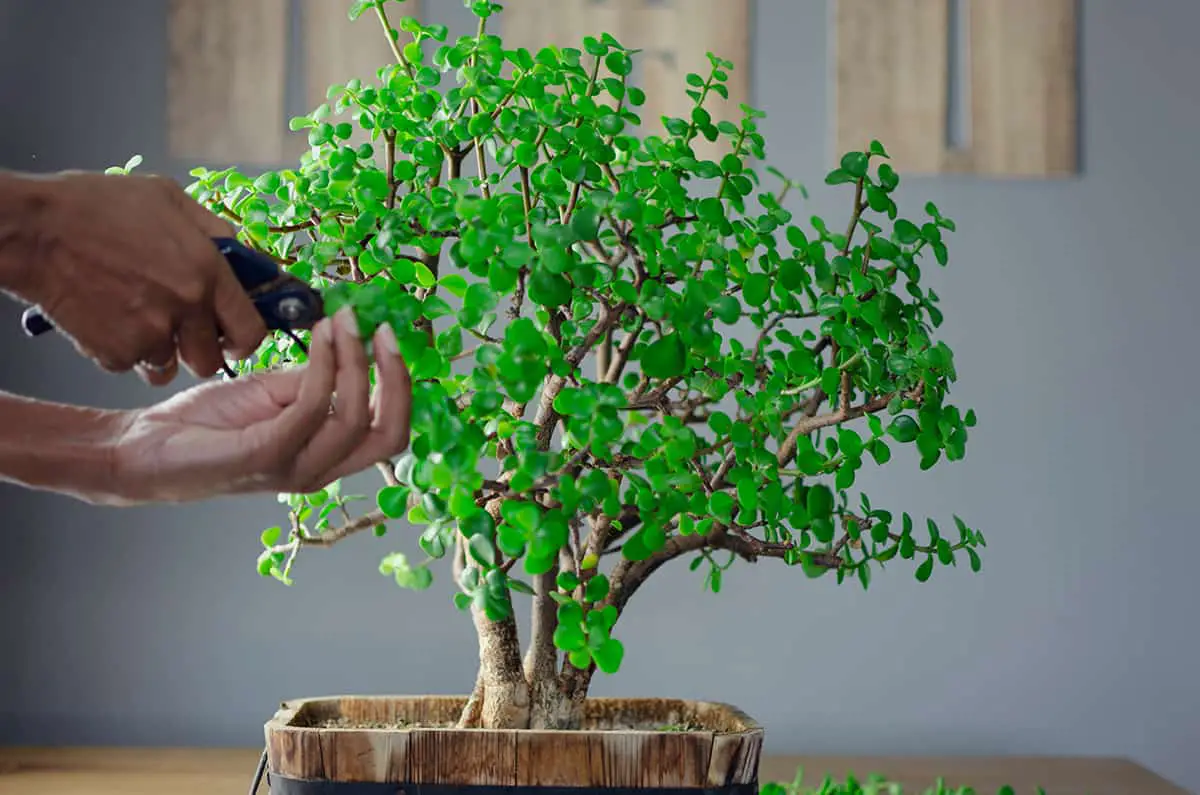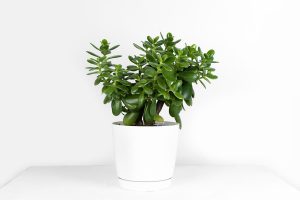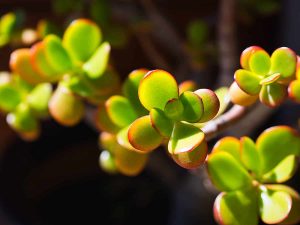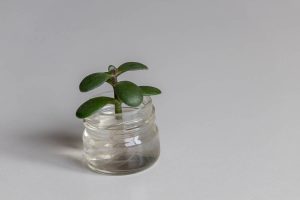Pruning your jade plant can promote new growth and improve its overall appearance. But before diving in with clippers, you should familiarize yourself with the proper techniques to avoid causing damage. This article will guide you through the process, ensuring your jade plant thrives with the right amount of trimming.
Table of Contents
Best Time to Prune
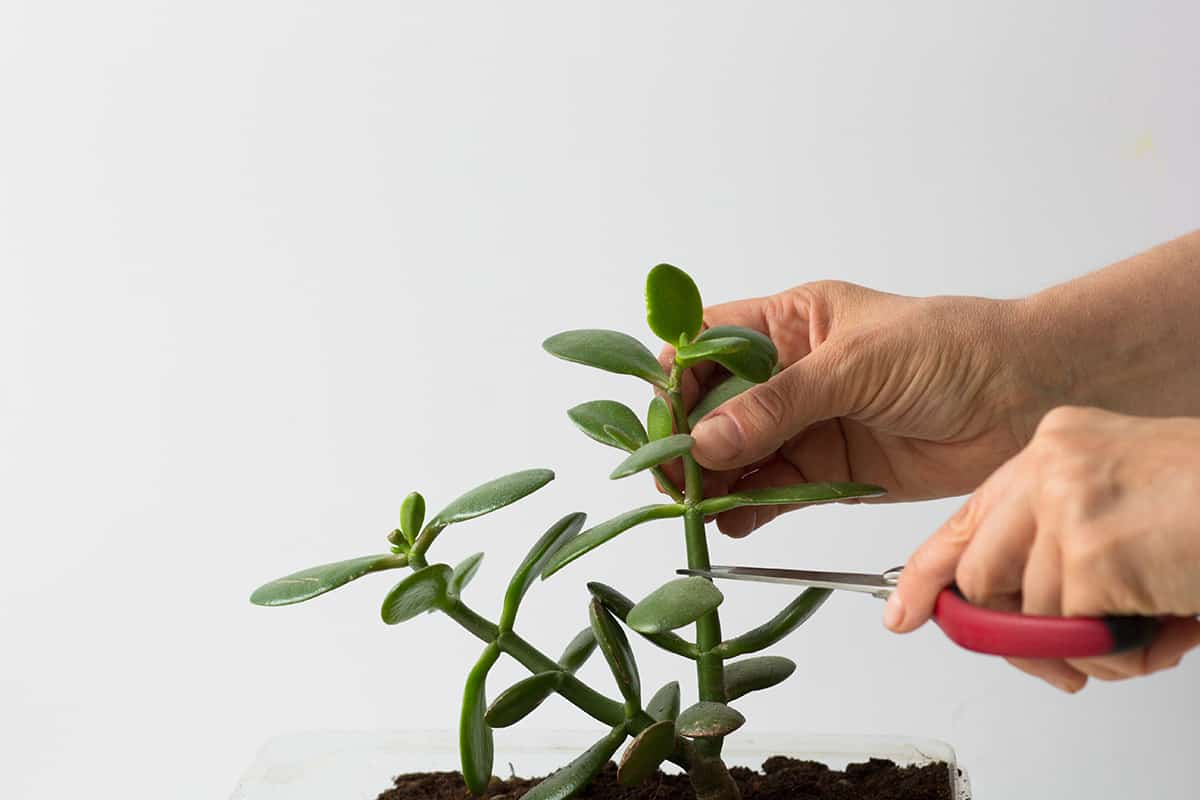
The ideal time to prune your Jade Plant significantly affects its growth and overall health. It’s recommended to prune your plant during the late winter or early spring before new growth starts. This period ensures a better response to pruning since the plant will focus its energy on producing fresh growth.
When pruning, make sure to use clean gardening tools to minimize the risk of infections or pests. Gently remove any dead leaves or branches first before moving on to healthy ones. Prune just above a leaf node or ring, as new growth will emerge from that point. This method maintains the plant’s shape and encourages bushier growth.
Sometimes, Jade Plants may become leggy, resulting in long and weak stems. In this situation, it’s crucial to cut back these stems to promote new and stronger growth. Remember to be patient and aware of the plant’s response to pruning, as different plants may have varied reactions.
Tools Required for Pruning
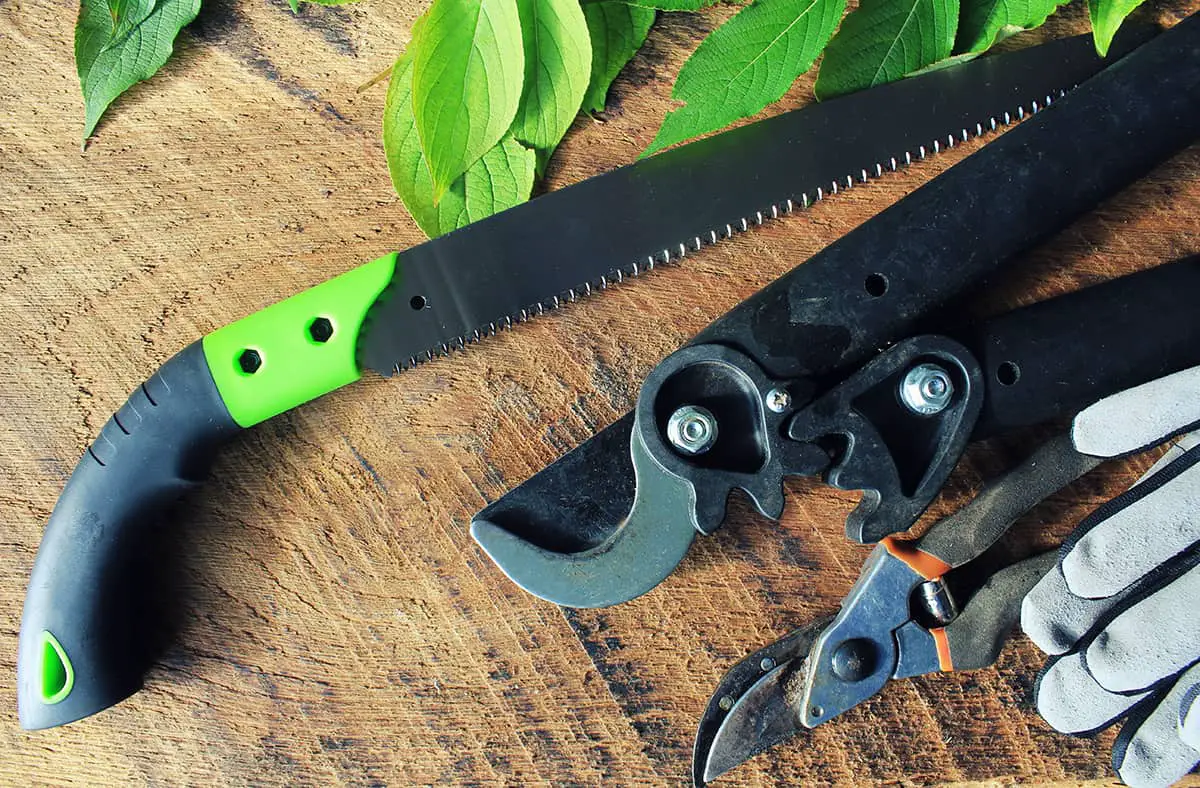
You’ll need high-quality pruning tools to ensure clean cuts and minimize damage to the plant.
The first tool you should prepare is a pair of sharp, clean pruning shears. These shears allow for precision cutting and are perfect for snipping smaller branches and stems. To maintain their effectiveness, clean and sharpen your shears regularly.
For thicker stems or branches, consider using a pruning saw. This highly efficient tool enables you to achieve clean cuts on larger plant material without causing excessive strain on your hands and wrists. Remember to keep your saw’s blade clean and sharp as well.
In addition to cutting tools, a pair of tweezers can prove invaluable when working with young, developing Jade plants. Tweezers help you remove smaller leaves or debris with minimal damage to the delicate plant tissue.
Lastly, always have a clean cloth or towel on hand. Wipe your tools clean after each cut to prevent the spread of disease and bacteria to other parts of the Jade plant.
Pre-Pruning Preparation
Before pruning your jade plant, gather the necessary tools. Choose a sharp pair of pruners to make clean cuts and reduce damage to the plant. Sterilize your pruning tool with rubbing alcohol or a bleach solution to minimize the risk of infection.
Assess your jade plant’s condition. Identify leggy stems, damaged branches, and areas with overcrowded growth. Keep in mind, the ideal pruning time is during the plant’s active growing season, typically in spring or early summer. Avoid pruning heavily during hot, dry weather as it may cause stress to the plant and impede recovery.
When creating a plan for pruning, consider the desired shape and size of your jade plant. Aim for a balanced canopy, removing crossing branches and those growing inwards. To encourage branching, make your cuts just above a ring on the stem, as new growth emerges from this point.
Finally, prepare a clean workspace with ample lighting to facilitate the pruning process. Having a clear view of your jade plant will help you make more precise cuts and avoid harming essential parts of the plant. Remember, approach pruning with patience and care for the best results.
Pruning Techniques
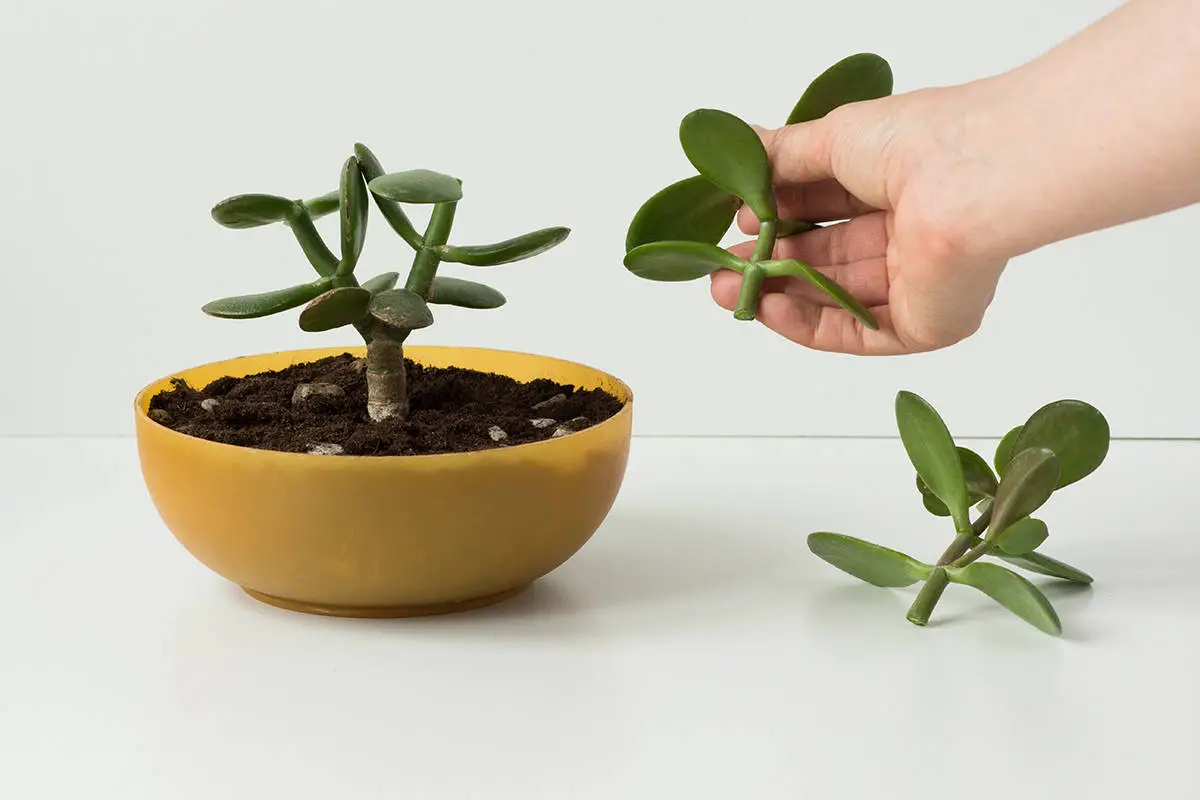
Removing Dead or Damaged Leaves
To maintain your jade plant’s health, it’s important to remove dead or damaged leaves regularly. Inspect your plant and gently pinch off any yellow, brown, or damaged leaves. Dispose of them properly to prevent diseases from spreading. Removing these leaves enables your plant to focus its energy on healthy growth.
Shaping the Plant
Shaping your jade plant helps it maintain an attractive appearance. Start by identifying the desired shape and plan out your cuts. Make sure to use clean, sharp pruning shears to avoid causing harm to the plant. Cut stems right before a ring, as new growth will emerge from this point.
Controlling Plant Size
Jade plants can become leggy if not pruned periodically. Keep the overall size in check by pruning leggy stems back, focusing on areas with overcrowded growth. Avoid removing more than one-third of the plant per year, as this may cause excessive stress and weaken the plant.
Encouraging Branching
To encourage branching and a fuller appearance, head back your jade plant by pinching, tip pruning, or shearing young branches and leaders. This will stimulate the development of new growth from buds just below the cut, giving your plant a bushier appearance and healthier overall structure.
Post-Pruning Care
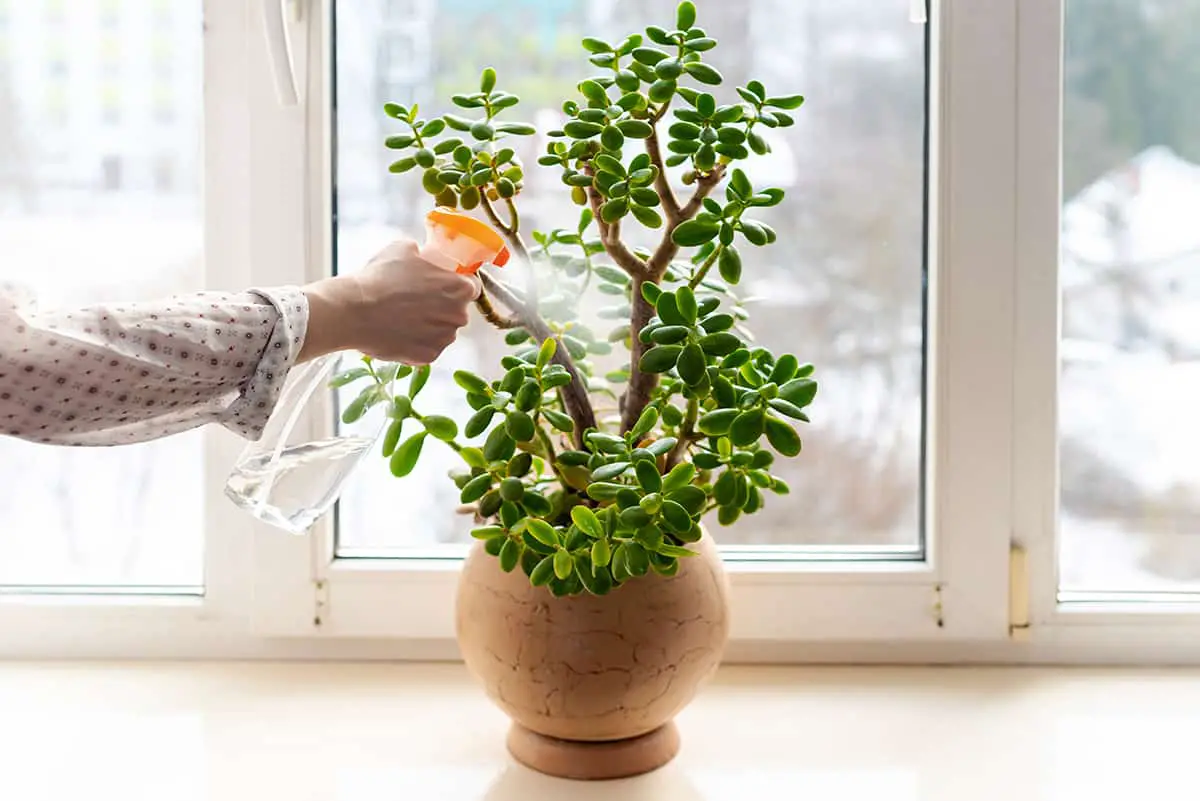
Disinfecting Cuts
After you’ve pruned your jade plant, it’s essential to disinfect the cuts to prevent infections. Apply a small dab of rubbing alcohol or hydrogen peroxide on a clean cloth, and gently dab the cuts. This process ensures that any bacteria that can cause harm to your plant are eliminated.
Watering After Pruning
Allow the potting soil to dry between waterings in spring and summer. Since jade plants store water in their stems and leaves, overwatering can lead to root rot. Avoid soaking the soil; instead, provide moderate, consistent moisture to promote healthy regrowth.
Managing Sun Exposure
Jade plants thrive in sunlight, requiring at least 4 hours of direct sun each day. Following pruning, it’s essential to monitor your plant’s sun exposure. Place it in a location that provides bright, indirect light initially, gradually reintroducing it to direct sunlight. This gradual acclimation will help prevent scorching, allowing your jade plant to recover and grow back stronger.
Common Pruning Mistakes to Avoid
When pruning a jade plant, it’s essential to avoid certain mistakes that can harm your plant. One common mistake is removing too many branches at once. You should only prune the necessary parts, concentrating on leggy or damaged branches.
Another mistake to avoid is making improper cuts. Ensure you cut the stem right before a ring, as new growth will develop from that ring. Cutting in the wrong location may result in poor growth and an unhealthy plant.
Not disinfecting your tools before pruning is another error. By disinfecting your tools between plants, you can prevent the spread of diseases. You can use rubbing alcohol or household bleach to sanitize your tools properly.
Neglecting the plant’s natural shape is another issue. As jade plants have a unique, attractive structure, it is important to maintain that form. Be cautious not to top the plant excessively, as this can lead to suckering and an undesired appearance.
Lastly, make certain that your jade plant’s environment supports healthy growth. Provide it with the appropriate amount of sunlight and watering to ensure optimal growth and response to pruning efforts.
When to Re-Pot After Pruning
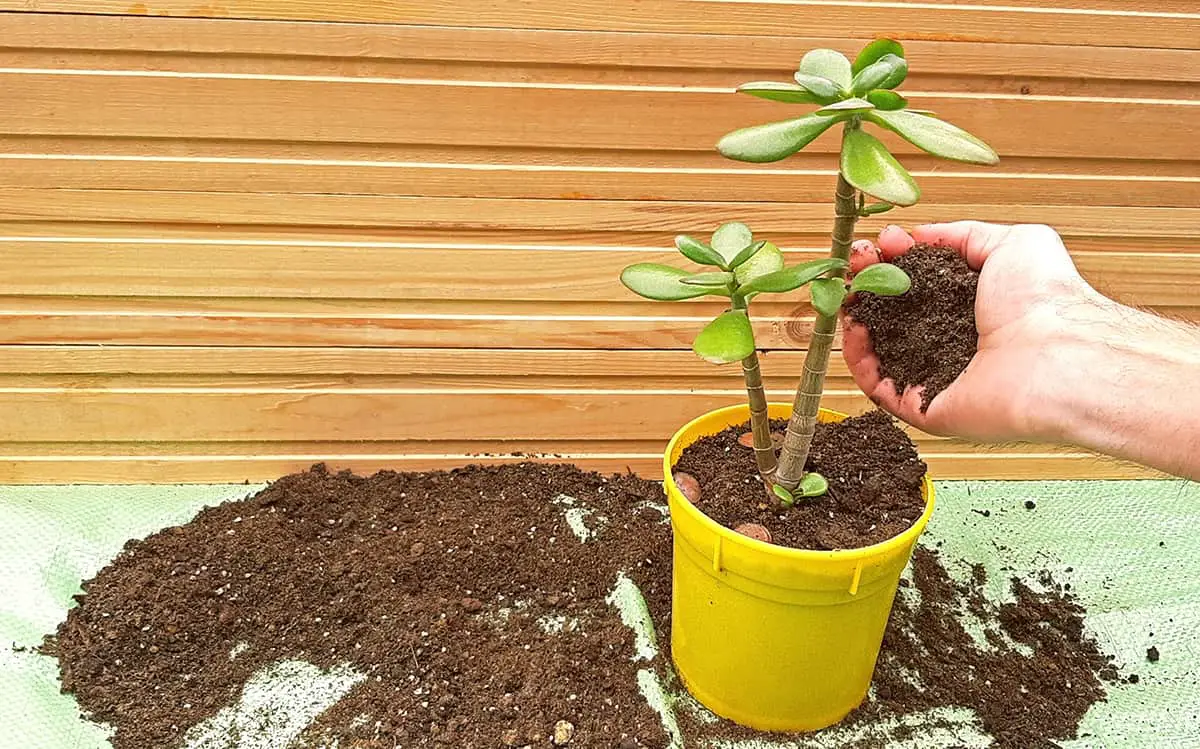
Knowing the best time to re-pot after pruning will ensure your plant thrives and grows appropriately. Generally, it is recommended to re-pot a jade plant every two to three years, or when it becomes top-heavy and susceptible to tipping over.
New growth season is the ideal time to re-pot your jade plant. During this period, when the plant begins to sprout new leaves, its roots are more actively developing, allowing for a better adjustment to the new pot. Additionally, you should prune the roots while re-potting, as this helps maintain the plant’s shape and encourages a thicker main trunk.
When re-potting your jade plant, be cautious of overwatering. Jade plants are succulents that store water in their foliage and stems. To avoid overwatering, you should allow the potting soil to dry completely between waterings, especially in spring and summer.
